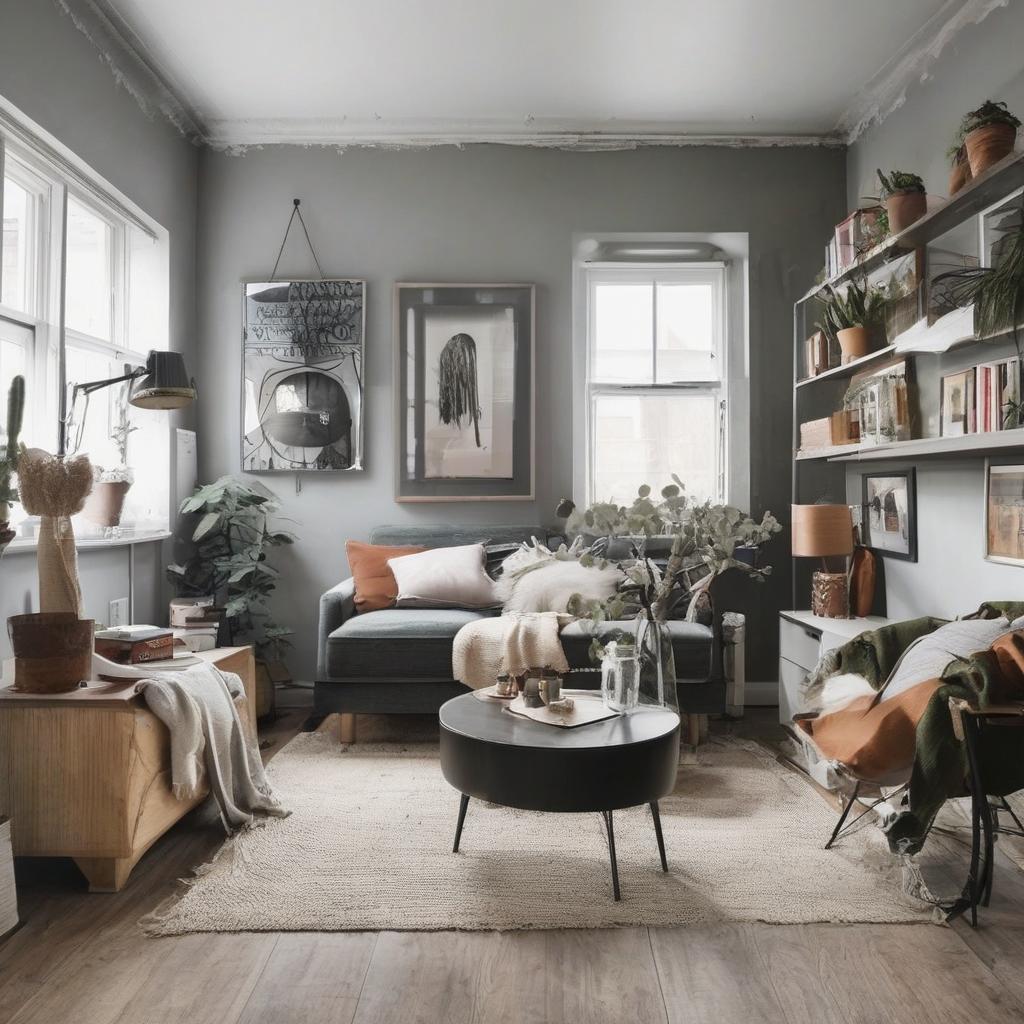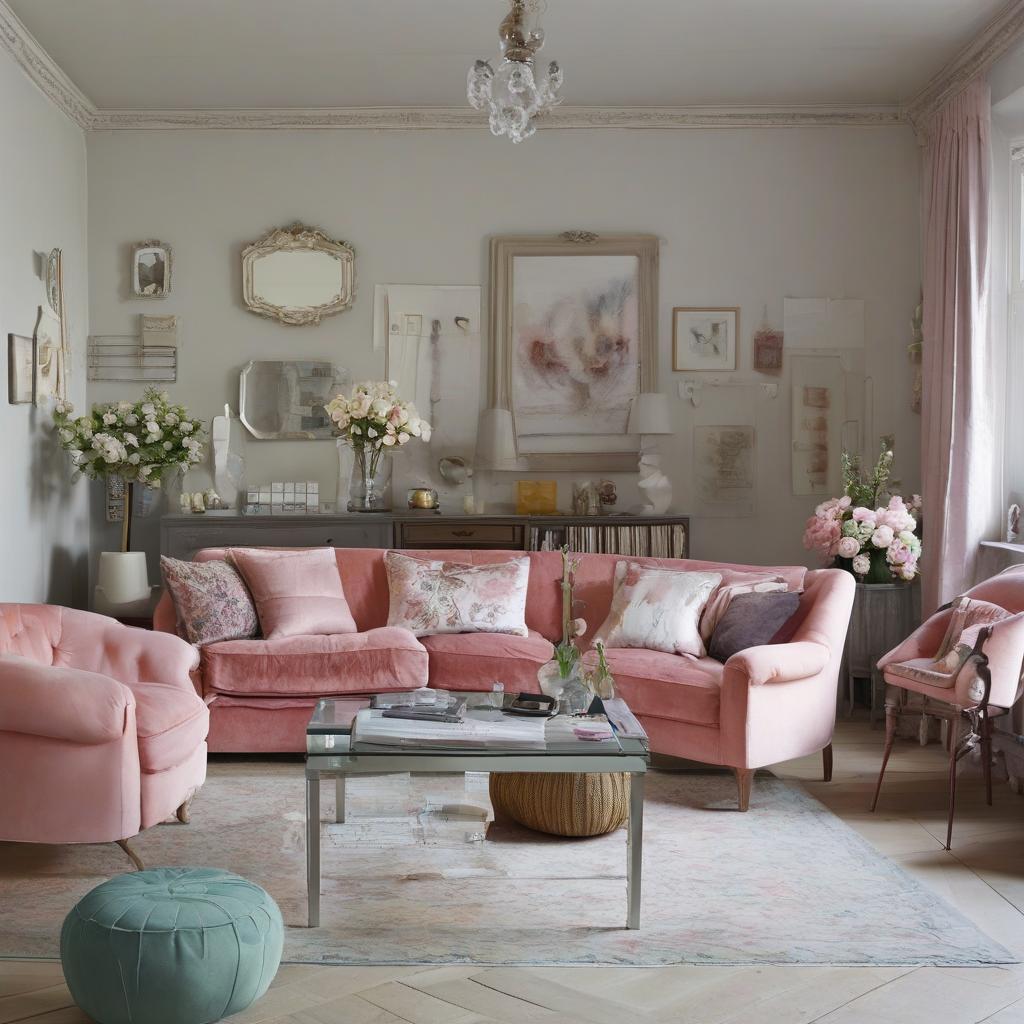
10 Clever Decorating Tricks For Making A Room Look Bigger
Small rooms don’t have to feel cramped or closed-in. With the right decorating tricks, even the tiniest spaces can feel bright, open, and welcoming. Whether you’re living in a compact flat, designing a guest room, or refreshing your home office, here’s how to make a small room look bigger without knocking down any walls.
1. Embrace Light and Neutral Colour Palettes
Colour plays a powerful role in how we perceive space. Light and neutral shades – think soft whites, light greys, pale blues, and gentle creams – reflect more natural and artificial light than darker tones. This increased reflectivity can make a room seem brighter and more spacious.
To amplify the effect, try painting the walls, ceiling, and trim in slightly different shades of the same color family. This monochromatic approach reduces visual boundaries between surfaces, helping the eye move more freely around the space. It’s one of the most effective visual strategies when figuring out how to make a room look bigger.
Pro Tip: If you’re painting a ceiling, go a shade or two lighter than the walls to draw the eye upward and create the illusion of height.
Some recommended light and neutral paints include:
- Farrow & Ball Exterior Matt – an eco-friendly, low VOC paint ideal for creating a light, airy feel in small rooms.
- Benjamin Moore Aura Satin – offers exceptional coverage and durability, perfect for achieving a seamless look that makes spaces feel larger.
- Benjamin Moore Waterborne Ceiling Paint Ultra Flat – provides a flawless, ultra-flat finish that helps ceilings recede, enhancing the perception of height.
- Benjamin Moore Ultra Spec 500 Scuff-X Satin – a scuff-resistant paint ideal for high-traffic areas, maintaining a clean look in compact spaces.
2. Use Mirrors to Reflect Light and Space
Mirrors are one of the oldest tricks in the interior design book – and for good reason. They reflect light, bounce views, and create the illusion of depth. A large mirror positioned opposite a window can double the amount of daylight in the room, making it feel airier and more open.
Even smaller mirrors, when placed thoughtfully – like behind lamps or across from a doorway – can visually expand a space. You can also experiment with mirrored furniture or panels to subtly boost brightness and scale.
Why it works: Mirrors trick the brain into thinking a room continues beyond its actual limits, which is exactly how to make a room feel bigger without any structural changes.
3. Choose Raised and Multi-Functional Furniture
When every square foot counts, your furniture needs to work harder. Opt for multi-functional pieces like ottomans with hidden storage, beds with built-in drawers, or nesting tables. These help reduce clutter and make organisation easier without sacrificing style.
Additionally, select furniture with exposed legs rather than boxy bases. Raised furniture allows you to see more floor space underneath, which helps make a small room look bigger by increasing the feeling of openness.
Design Note: Avoid overfilling the room – leave some breathing room between pieces. Less really is more in a small space.
4. Declutter and Organise with Smart Storage
Clutter is one of the biggest culprits in making a space feel tight. When items are scattered or overflowing from surfaces, even a large room can feel cramped. Embrace minimalism and maximise vertical storage – think wall-mounted shelves, tall cabinets, or even built-in alcove units.
By keeping your essentials neatly stowed and surfaces clean, you not only make a room look bigger, but also create a more calming environment.
To ensure storage optimises your space, consider hiring a joinery expert to create custom cabinetry for your space.
Quick win: Keep your colour palette consistent – even in storage. Matching storage baskets or boxes can make shelving look streamlined and intentional.
5. Maximise Natural Light with Light Window Treatments
Natural light is your best friend in a small space. Avoid heavy, dark curtains that absorb light and weigh the room down. Instead, opt for sheer or light-filtering window treatments that let the daylight flood in.
If privacy is a concern, try translucent blinds or café curtains that cover only the lower half of your windows.
Advanced tip: Mount curtain rods close to the ceiling and let drapes fall to the floor. This elongates the wall and makes ceilings feel higher – perfect for those wondering how to make a small room feel bigger vertically.
6. Use Vertical Lines and Tall Elements
Adding height visually expands your space. Vertical stripes, whether in wallpaper, paint, or furniture lines, guide the eye upward and stretch the perceived height of the room.
Incorporate tall bookshelves, floor lamps, or even vertical artwork. Floor-to-ceiling curtains or paneling can also create the same effect. This technique is especially effective in low-ceilinged rooms.
Design Tip: Paint vertical stripes in alternating shades of the same colour to keep the look soft but structured.
7. Choose Light-Coloured or Consistent Flooring
Just like walls and ceilings, your flooring impacts how spacious a room feels. Pale woods, light vinyls, or neutral-toned carpets can help a room feel brighter and more expansive.
Better still, if you can use the same flooring across multiple adjoining rooms, it creates visual continuity and eliminates dividing lines that can make a space feel chopped up.
Pro tip: Use rugs sparingly or go for transparent ones like jute or low-contrast designs so they don’t interrupt the flow of the room.
8. Layer Your Lighting for Ambience and Depth
A single overhead light often casts shadows that shrink a room. Instead, layer your lighting using a combination of ambient ceiling, task (table/floor lamps), and accent (wall lights or LED strips) to evenly illuminate the space.
Proper lighting adds depth and draws attention to specific areas of the room, making it feel dynamic and larger.
Style Suggestion: Use slimline or wall-mounted lamps to save surface space while still creating cosy pools of light.
9. Keep Décor and Patterns Minimal and Purposeful
Too many bold patterns or busy accessories can quickly overwhelm a small room. Instead, opt for minimal décor with a few statement pieces. Choose large-scale art or one bold feature wall rather than lots of smaller items.
For textiles like cushions, throws, or curtains, stick to solid colors or subtle patterns to maintain visual calm.
Rule of thumb: When in doubt, remove one item. Less clutter equals more visual space.
10. Create Flow With Continuity
One of the simplest ways to make a room seem bigger is to create a sense of flow between spaces. This could mean matching paint colors across adjoining rooms, using the same type of wood for trims and furniture, or aligning the direction of floorboards.
When your eye moves smoothly through a room without interruption, it feels bigger because your mind isn’t constantly stopping to process contrast or clutter.
Expert trick: Paint skirting boards and trim the same colour as the walls to blur boundaries and stretch space visually.
Final Thoughts
Learning how to make a small room look bigger isn’t just about tricking the eye – it’s about making your space work smarter. With these practical and stylish solutions, you can transform any small room into a brighter, more open-feeling space that you’ll love spending time in.
Whether you’re decorating a compact bedroom, living room, or home office, these tips will help you make a room feel bigger while reflecting your personal style.
Must-Have Decorating Tools and Accessories
Some essential decorating tools and accessories to consider include:
- Invisiscrim – an ultra-thin fabric scrim tape that reinforces walls and ceilings, preventing cracks and ensuring a smooth finish.
- Decorating Sundries – explore a range of essential tools like brushes, rollers, and fillers to assist in your decorating projects.

Frequently Asked Questions
What is the best colour to paint a small room to make it look bigger?
Light and neutral shades such as soft whites, light greys, pale blues, and gentle creams.
How can mirrors help make a room look bigger?
By reflecting light, bouncing views, and creating the illusion of depth.
What type of furniture is best for small rooms?
Raised and multi-functional furniture such as ottomans with hidden storage and beds with built-in drawers.
How can I maximise natural light in a small room?
By using sheer or light-filtering window treatments and mounting curtain rods close to the ceiling.
What is the effect of using vertical lines and tall elements in a small room?
It guides the eye upward and stretches the perceived height of the room.
How can flooring impact the perceived size of a room?
Light-coloured or consistent flooring can make a room feel brighter and more expansive.
What is the best way to layer lighting in a small room?
By using a combination of ambient ceiling, task, and accent lighting to evenly illuminate the space.
How can I avoid overwhelming a small room with décor?
By opting for minimal décor with a few statement pieces and choosing large-scale art or one bold feature wall.
What is the benefit of creating flow with continuity in a small room?
It makes the room seem bigger by allowing the eye to move smoothly through the space without interruption.